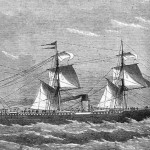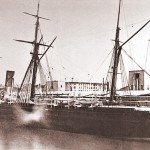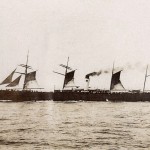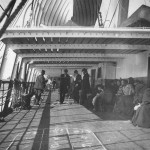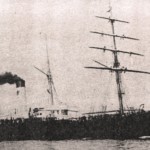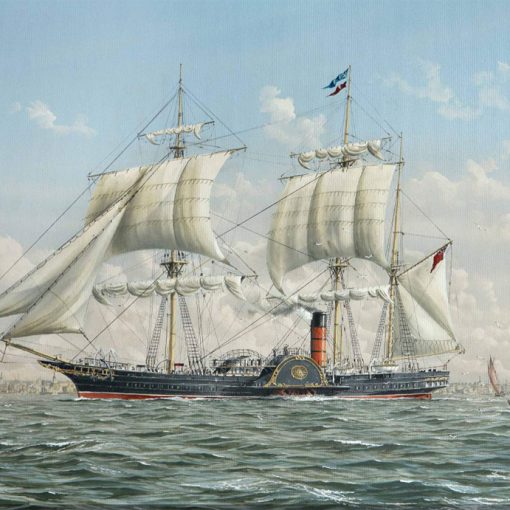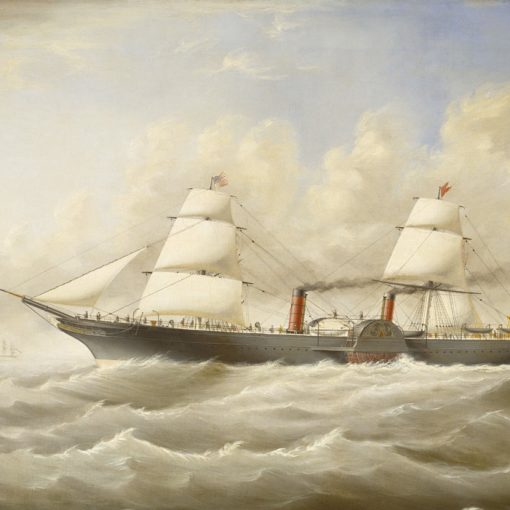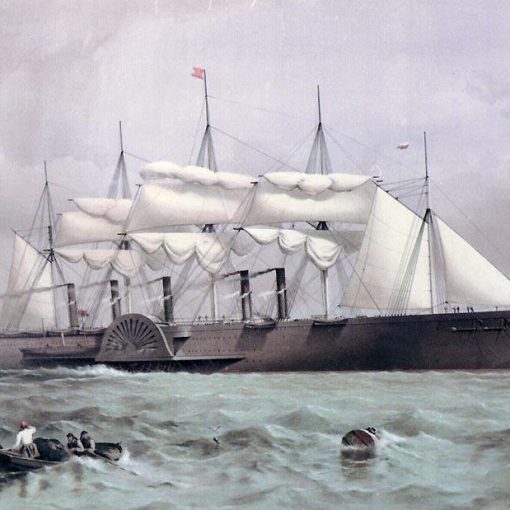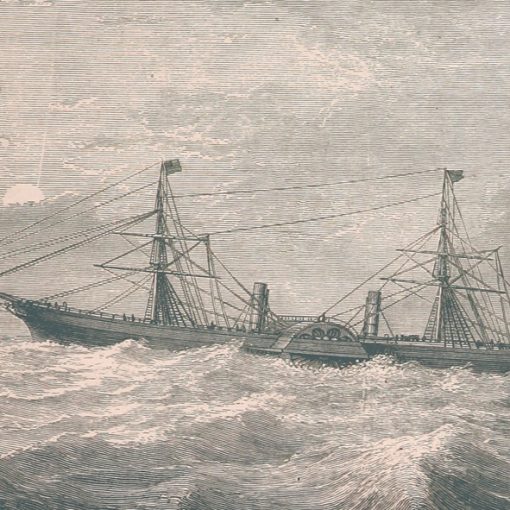1867 – 1902
Also known as Waesland
One of the corner stones in the Cunard Line’s fleet was the line’s famous conservatism. Even though Isambard Brunel’s spectacular Great Britain had entered service in 1845 with a screw propeller, Cunard gave their Persia of 1856 paddle wheels. This ship became a success and she was followed in 1862 by a near-sister, named Scotia, also relying on the paddle wheels. The same year, the propeller driven steamer China entered service, and as she resembled the Scotia, she was perfect to compare with. After both ships had been in service for some time, it was discovered that the China was the superior ship, as all the comparisons favoured her.
In an attempt to convince the public and some conservative shipping companies that the propeller actually was more efficient than paddle wheels, a test had been carried out in 1845 between the two almost identical frigates Rattler and Alecto, both of 880 tons. The propeller driven Rattler was chained stern-to-stern with the paddle wheel driven Alecto as the battle begun. Both vessels steamed on at full power in opposite directions, and the Rattler with her propeller towed the Alecto stern first with ease at a speed of 2.7 knots.
Cunard had to face it. If they were supposed to continue being one of the most prestigious shipping companies in the world, they had to rely on new technique. As a result of some new thinking, Cunard was considering their first major propeller driven unit during the mid-1860s. The new vessel would be named Russia, and would be almost 3,000 gross tons large, making her somewhat smaller than the Persia and Scotia.
The Russia was constructed at J. & G. Thomson Limited in Glasgow. She was fitted with three masts and a single funnel. Without the characteristic look of the paddle wheels, her sides looked quite bare and naked. Just like her many predecessors, the Russia was equipped with the distinctive clipper bow. This sleek and streamlined look made the Russia appear a very powerful vessel.
And powerful she was. Even though she never captured the Blue Riband, she was known as one of the fastest liners on the North Atlantic. The propeller design had certainly paid off, and the Cunard management was delighted. However, as the Russia only had one screw, she was very dependent on her sails. If the propeller shaft snapped in the middle of the Atlantic, the ship would still be able to continue the voyage without too much delay thanks to the sails. True, the arrival at port might be two or three weeks late, but at least the steamer did not have to suffer the indignity of being towed into harbour. Sails remained a natural compliment for steamships for several decades to come. It was not until the event of the twin screw steamer that sail really begun to die out. But as late as 1914 on the giant HAPAG-liner Vaterland, who sailed between Germany and America, the crew was given specifications in which it was spelled out that the ship’s two masts were not to be rigged for sail.
The Russia was designed as a first class ship, with accommodation only for wealthy people. Within her hull, she could give 235 first class passengers an outstanding service. Still, many people were confused why such a large ship as the Russia could not accommodate more passengers. No one could come up with a specific reason why the builders had done so, and after some time in service, the stateroom area was expanded to accommodate 430 passengers.
Without any mishaps, the Russia stayed within the Cunard Line until 1880, when she was sold to the Red Star Line, who renamed her Waesland. In connection with the Red Star Line-takeover, the former Russia was lengthened to 132 metres and her gross tonnage was increased to 4,752. She was also given an additional mast, compound engines were fitted and the passenger accommodation was increased to house 120 first class passengers and 1,500 third.
In September 1895 the vessel was chartered by the American Line, for their Philadelphia to Liverpool route. The liner continued to sail the oceans with distinction into the 20th century. The last year for the Waesland was 1902. Perhaps she would have lived on for yet another few years if it had not been for a devastating collision on March 5, with the British ship Harmonides. Unfortunately, the former Russia suffered heavy damage and went down. One of the trend-setting ships in the Cunard Line was now forever gone, but Cunard did not mourn as they had the sight aimed for a triumphant revenge on the German liner Kaiser Wilhelm der Grosse, who had captured the Blue Riband from the Cunarder Lucania in 1897.
Specifications
- 358 feet (109.4 m) long
- 42 feet (12.8 m) wide
- 2,959 gross tons
- Steam engines powering a single propeller
- 12.5 knot service speed
- Passenger capacity of 235 (later 430) people

